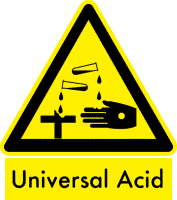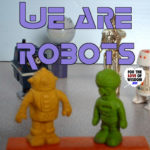This is a book review of Daniel C. Dennett’s book, Darwin’s Dangerous Idea: Evolution and the Meanings of Life. This is an excellent book, well worth reading. What I particularly like about this book is how it echoes my own understanding of evolution and elaborates on it further. Prior to reading this book, I was already thinking about how natural selection is an ordering principle that can account for order at all levels of reality, even accounting for how order can arise from chaos.
My initial idea was that in a chaotic environment, there will be a variety of things in different forms and configurations. And some of these will naturally be more stable than others. Being more stable, they will last longer. So, there will be natural selection for stability. Even if initially in a chaotic state, more and more stable structures will appear in the universe, causing it to become more and more ordered.
When a certain degree of stability becomes characteristic of the universe, the present units of stability become building blocks for larger and more complex units of stability. In the initial stages, the first units of stability might be the more stable subatomic particles, such as electrons, protons, and neutrons. Once these are abundant enough, the next level of stability might be atoms. Atoms could combine into molecules, and molecules into larger groups of molecules, and so on. Simply through natural selection for stability, the constituents of the universe can evolve from subatomic particles to stars, planets, solar systems, galaxies, and galactic clusters.
At some point in this natural selection for stability, there will arise a new kind of stability. I was previously speaking about the self-sufficient stability of singular objects. When some of these objects are powerful enough, they can provide energy for less self-sufficient objects to maintain their stability. Instead of depending simply on their own structure for stability, less self-sufficient objects will depend upon fuel of some sort from an external source. These will be more complex objects, capable of self-repair through the availability of an external fuel source.
Self-repair requires the ability to reproduce parts of oneself. This leads to the ability to produce copies of oneself. So, besides natural selection for stability of physical structure, we now get natural selection for stability of form, where a form is something which may be passed from one group of matter to another through self-replication. This is the emergence of replicators.
Through copying errors, replicators may acquire new characteristics, and natural selection will favor the characteristics that help them reproduce. This will eventually lead to more and more complex replicators. As replicators become larger and more complex, some replicators will evolve to feed off of other replicators. This will normally require mobility. To feed off other replicators, a replicator will normally have to bring itself to them. Besides mobility, the ability to sense the environment will become an advantage. If a replicator is going to feed off of others, it helps to know, in some sense, where to find its prey.
As replicators start feeding on other replicators, there will also be the need for prey replicators to avoid predator replicators, and natural selection will favor characteristics in prey replicators that help them avoid the predator replicators. This conflict of interests between predator and prey replicators creates an arms race, in which natural selection favors characteristics that make each better at what it needs to do to survive and reproduce. And quite often the same species acts as both predator and prey, which can increase the pace of the arms race. In some instances, predator and prey will end their arms race by forming a symbiotic relationship, but that is an exception. In general, the arms race between predator and prey leads to greater mobility, greater sensory awareness, and eventually to consciousness and intelligence. So, natural selection is able to account for the evolution of intelligent life such as our own from nothing more than chaos.
Indeed, natural selection provides such a simple and elegant explanation of the entire order of the universe that there is no need left for any kind of supernatural explanation for things.

So far, I have explained my own ideas, which I had come up with before reading this book. Dennett adds some details to what I thought of, such as the idea of selection between different universes, but he agrees with the basic principle that natural selection alone is all that we need to account for the order of the universe. And this is what gives his book its title. It is called Darwin’s Dangerous Idea, because the idea of natural selection is corrosive to religious and supernatural explanations for the world. He calls it a universal acid. When we thoroughly understand the implications of the idea of natural selection, the idea which Darwin introduced to the world, this understanding will eat away at religious belief.
Dennett expresses the same idea I’ve been getting at in terms of skyhooks vs. cranes. Literally, a crane is a machine used for lifting things. It sits on the ground and has a long neck like the bird by the same name. A skyhook is literally a floating object used for lifting things. Dennett uses these as metaphors. By skyhook, he means a supernatural explanation for something, and by crane, he means a natural explanation for something. Dennett believes that large, complex cranes are composed of, and have sometimes evolved from, smaller simpler cranes. Wherever you look, he believes you will find cranes, not skyhooks, and he believes it is cranes all the way down.
Dennett disagrees with Stephen J. Gould that religion and science are compatible, and he criticizes Gould for looking for skyhooks. If Dennett is right, the conflict between religion and science goes deeper than The Origin of Species vs. a literal interpretation of Genesis. There are many people who accept evolution but still maintain that God had a hand in it at some point. According to Dennett, natural selection is such a thorough explanation for things that there is never any need to suppose that a supernatural creator ever had a hand in making things.
Overall, this is an excellent book. Even though I had already formed the same understanding of natural selection as Dennett advocates in this book, this book was well worth reading, and it will probably we well-worth re-reading at some time. He goes into far greater detail than I have in this review. He also covers topics this review hasn’t touched on, such as memes, morality, and artificial intelligence. The reading level of this book is generally at college level, and a background in philosophy will aid in the understanding of some sections. But it’s not essential. The main idea behind the book is simple enough to understand, and the bulk of the book is mainly about its implications. If you care to have an understanding of things that makes sense, and you are more interested in knowing the truth than in comforting yourself with fantastic stories, then I highly recommend this book. Pick up a copy from your local used bookstore, or, if you must, order a copy online. This may be the best book I’ve read on evolution, and I can’t recommend it enough.



